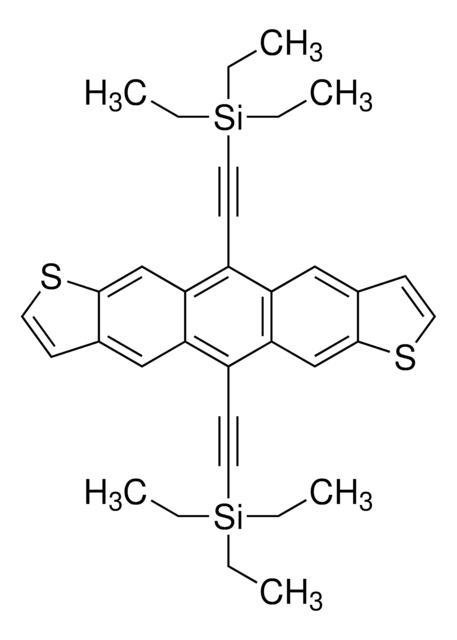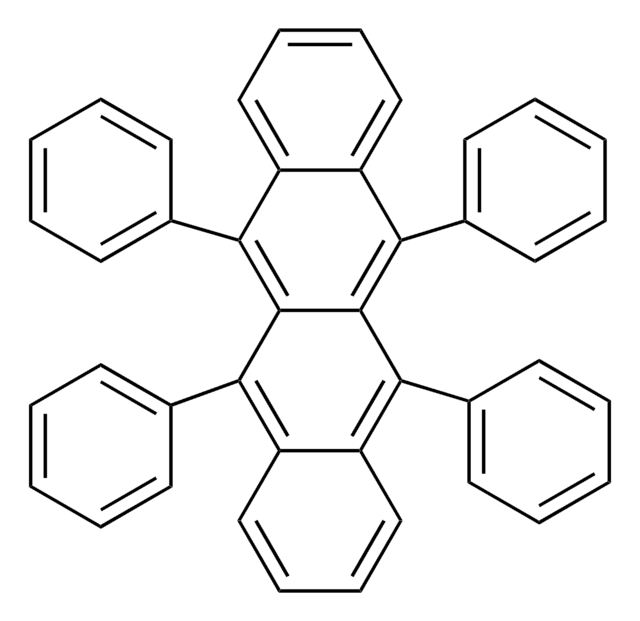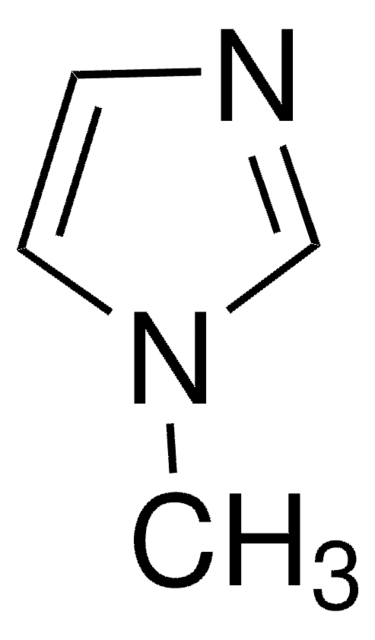716006
6,13-Bis(triisopropylsilylethynyl)pentacene
≥99% (HPLC)
Synonym(s):
TIPS pentacene
About This Item
Recommended Products
Quality Level
Assay
≥99% (HPLC)
form
solid
mp
276 °C
solubility
acetone: soluble 0.16 wt. % at 23 °C(lit.)
anisole: soluble 2.03 wt. % at 23 °C(lit.)
n-butylbenzene: soluble 3.43 wt. % at 23 °C(lit.)
toluene: soluble 6.57 wt. % at 23 °C(lit.)
density
1.104 g/cm3 at 25 °C
SMILES string
CC(C)[Si](C#Cc1c2cc3ccccc3cc2c(C#C[Si](C(C)C)(C(C)C)C(C)C)c4cc5ccccc5cc14)(C(C)C)C(C)C
InChI
1S/C44H54Si2/c1-29(2)45(30(3)4,31(5)6)23-21-39-41-25-35-17-13-15-19-37(35)27-43(41)40(22-24-46(32(7)8,33(9)10)34(11)12)44-28-38-20-16-14-18-36(38)26-42(39)44/h13-20,25-34H,1-12H3
InChI key
FMZQNTNMBORAJM-UHFFFAOYSA-N
General description
Application
Legal Information
Signal Word
Warning
Hazard Statements
Precautionary Statements
Hazard Classifications
Eye Irrit. 2 - Skin Irrit. 2 - STOT SE 3
Target Organs
Respiratory system
Storage Class Code
11 - Combustible Solids
WGK
WGK 3
Flash Point(F)
Not applicable
Flash Point(C)
Not applicable
Choose from one of the most recent versions:
Already Own This Product?
Find documentation for the products that you have recently purchased in the Document Library.
Articles
The conductivity of organic semiconductors can be increased, and the barriers to charge-carrier injection from other materials can be reduced, by the use of highly reducing or oxidizing species to n- or p-dope, respectively, the semiconductor.
Silylethyne-Substituted Pentacenes
Flexible electronic circuits, displays, and sensors based on organic active materials will enable future generations of electronics products that may eventually enter the mainstream electronics market.
Optoelectronic devices such as light-emitting diodes (LEDs), solar cells, and light-emitting field effect transistors (FETs) that utilize organic materials as their light harvesting and/or charge transporting component have been the subject of much academic and commercial attention.
Protocols
One of the best known and highest performing smallmolecule organic semiconductors is TIPS-Pentacene. TIPS-Pentacene is soluble in a wide range of solvents and does not require a thermal conversion after deposition.
Related Content
Organic electronics utilizes organic conductors and semiconductors for applications in organic photovoltaics, organic light-emitting diodes, and organic field-effect transistors.
Organic electronics utilizes organic conductors and semiconductors for applications in organic photovoltaics, organic light-emitting diodes, and organic field-effect transistors.
Organic electronics utilizes organic conductors and semiconductors for applications in organic photovoltaics, organic light-emitting diodes, and organic field-effect transistors.
Organic electronics utilizes organic conductors and semiconductors for applications in organic photovoltaics, organic light-emitting diodes, and organic field-effect transistors.
Our team of scientists has experience in all areas of research including Life Science, Material Science, Chemical Synthesis, Chromatography, Analytical and many others.
Contact Technical Service




![Benz[b]anthracene 98%](/deepweb/assets/sigmaaldrich/product/structures/197/885/3a015625-5e09-4f15-8b17-4cc285304fc7/640/3a015625-5e09-4f15-8b17-4cc285304fc7.png)




